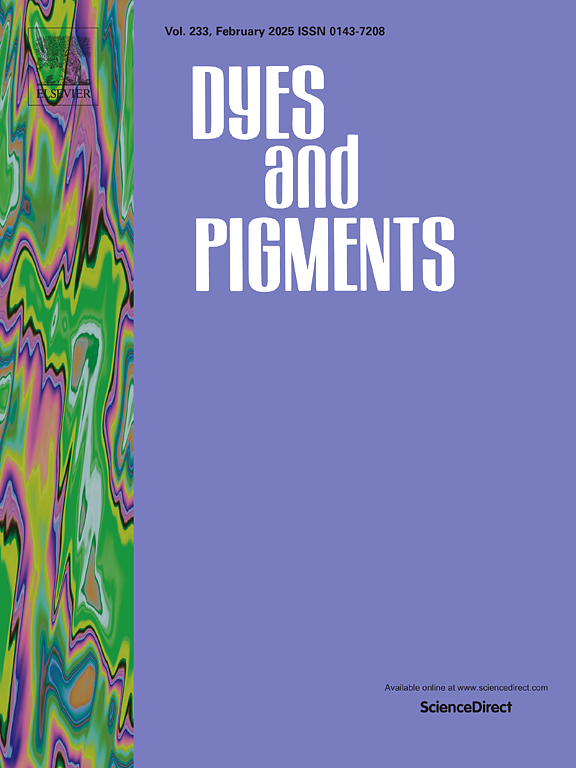Double helix-like assembly of axially chiral 3,3′-Bi(benzo[b]thiophene-S,S-dioxide) Derivative in crystals and circularly polarized luminescence
IF 4.1
3区 工程技术
Q2 CHEMISTRY, APPLIED
引用次数: 0
Abstract
The assembly behavior and the development in circularly polarized luminescence (CPL) materials of axially chiral molecules have become an attractive research topic in material chemistry. This study reports the facile syntheses of 3,3′-bibenzo[b]thiophene and its thienyl-S,S-dioxidized derivatives modified with N-phenylcarbazole and triphenylamine, respectively. The obtained four compounds display blue-to-red luminescence with large Stokes shifts. Single-crystal structure analysis showed the first example of a double helix-like assembly of axially chiral molecules for triphenylamine-modified bis-S,S-dioxide (rac)-DBTOTPA. DBTOTPA also exhibited excellent optical properties, with the maximum quantum yield (ΦPL) reaching 50 % in solution, which could be attributed to the enhanced intramolecular charge transfer (ICT) interactions due to the synergistic action of sulfur oxidation and triphenylamine donor. 1 % DBTOTPA-doped PMMA film also showed a quite high ΦPL value up to 97 %. The (P)- and (M)-enantiomers of DBTOTPA exhibited remarkable orange and deep-red CPL performance in toluene/PMMA film and neat film, respectively, with the luminescence dissymmetry factor (|glum|) of over 1 × 10−3. This work opens a new avenue for designing and synthesizing novel organic CPL emitters with new assembly forms and intensively chiroptical activities.

求助全文
约1分钟内获得全文
求助全文
来源期刊

Dyes and Pigments
工程技术-材料科学:纺织
CiteScore
8.20
自引率
13.30%
发文量
933
审稿时长
33 days
期刊介绍:
Dyes and Pigments covers the scientific and technical aspects of the chemistry and physics of dyes, pigments and their intermediates. Emphasis is placed on the properties of the colouring matters themselves rather than on their applications or the system in which they may be applied.
Thus the journal accepts research and review papers on the synthesis of dyes, pigments and intermediates, their physical or chemical properties, e.g. spectroscopic, surface, solution or solid state characteristics, the physical aspects of their preparation, e.g. precipitation, nucleation and growth, crystal formation, liquid crystalline characteristics, their photochemical, ecological or biological properties and the relationship between colour and chemical constitution. However, papers are considered which deal with the more fundamental aspects of colourant application and of the interactions of colourants with substrates or media.
The journal will interest a wide variety of workers in a range of disciplines whose work involves dyes, pigments and their intermediates, and provides a platform for investigators with common interests but diverse fields of activity such as cosmetics, reprographics, dye and pigment synthesis, medical research, polymers, etc.
 求助内容:
求助内容: 应助结果提醒方式:
应助结果提醒方式:


